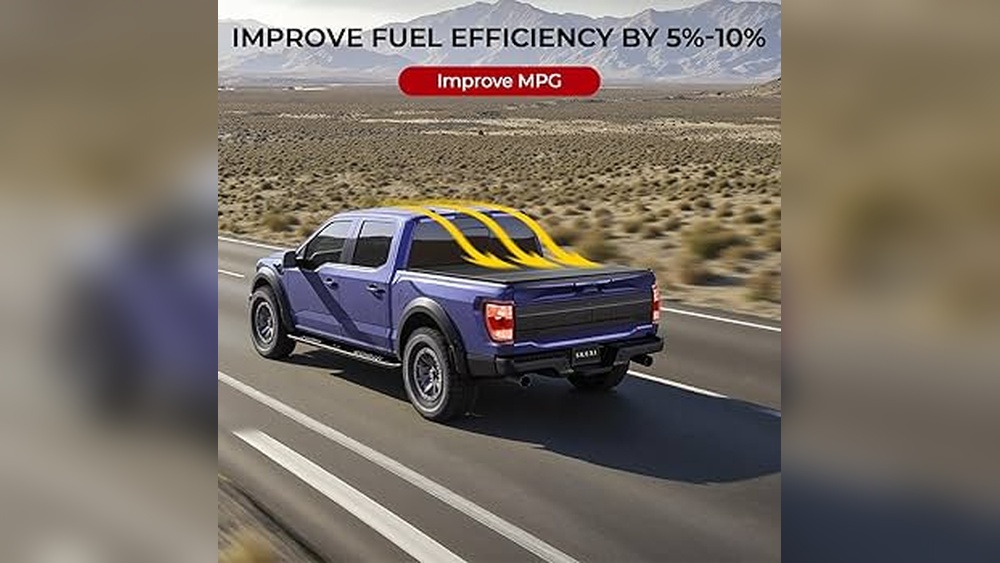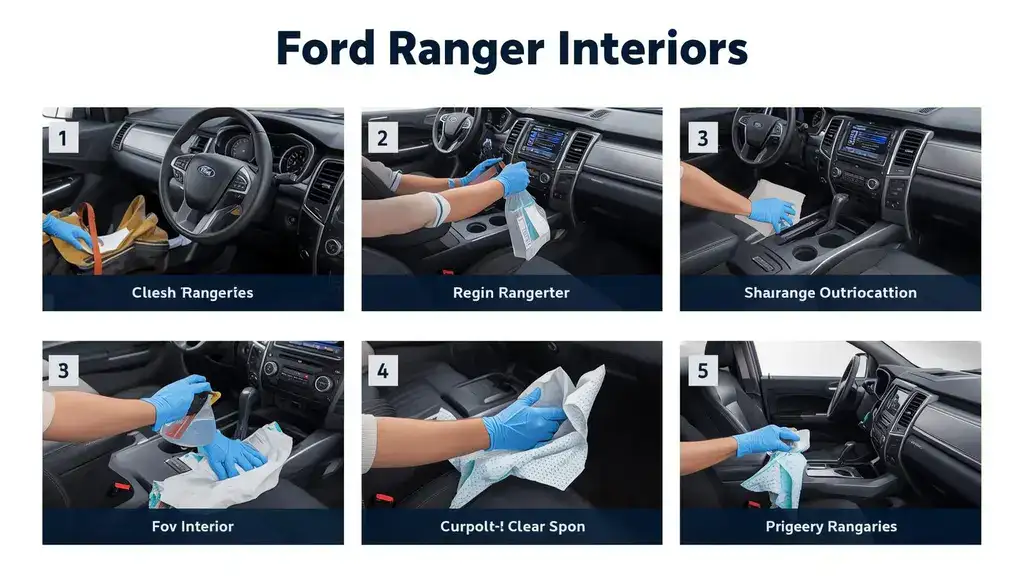Owning a Ford Ranger means you’ve got a tough, reliable truck ready for any challenge. But to keep it running smoothly and avoid costly repairs, you need to take care of it the right way.
Imagine saving time and money with simple, easy steps you can do yourself. You’ll discover straightforward maintenance tips that fit into your busy life and help your Ford Ranger perform at its best. Ready to protect your investment and enjoy every drive?
Keep reading—your truck will thank you.
Regular Fluid Checks
Regular fluid checks keep your Ford Ranger running smoothly. Fluids help the engine and parts work well. Checking them often stops big problems. It saves money on repairs and keeps your truck safe on the road.
Fluids wear out or leak over time. Checking levels and quality is a simple task. It takes only a few minutes but helps a lot. Let’s look at the key fluids to check regularly.
Engine Oil And Filter
Engine oil keeps the engine parts moving without friction. Low or dirty oil can cause engine damage. Check the oil level using the dipstick under the hood. Change the oil and filter as the manual says. Fresh oil improves engine life and performance.
Coolant Levels
Coolant stops the engine from overheating. It circulates through the engine and radiator. Check the coolant reservoir when the engine is cold. Fill it to the right level with the recommended coolant. Low coolant can cause engine overheating and damage.
Brake Fluid
Brake fluid transfers force to brake parts. Low brake fluid can reduce braking power. Find the brake fluid reservoir near the firewall. Keep the fluid between the minimum and maximum marks. Change brake fluid as suggested in the owner’s manual for safety.
Transmission Fluid
Transmission fluid helps gears shift smoothly. Low or dirty fluid can cause shifting problems. Check the fluid level using the transmission dipstick if your Ranger has one. Use the correct type of transmission fluid. Change it at intervals to keep the transmission healthy.
Tire Care
Proper tire care keeps your Ford Ranger safe and efficient. Tires affect handling, fuel use, and ride comfort. Simple care steps extend tire life and save money. Focus on pressure, rotation, and tread checks for best results.
Tire Pressure Monitoring
Check tire pressure at least once a month. Use a reliable gauge for accurate readings. Keep pressure at the level in your owner’s manual. Too low or high pressure wears tires unevenly. Proper pressure improves fuel efficiency and safety.
Tire Rotation Schedule
Rotate tires every 6,000 to 8,000 miles. This balances wear across all tires. Follow the pattern recommended in your Ford Ranger manual. Even wear helps tires last longer and perform better. Set reminders to keep rotation on track.
Tread Inspection
Inspect tire tread depth regularly. Use a tread depth gauge or a simple penny test. Replace tires if tread is below 2/32 inch for safety. Look for cracks, cuts, or bulges on the sidewalls. Good tread ensures better grip and control on roads.
Battery Maintenance
Battery maintenance is a key part of keeping your Ford Ranger running smoothly. A healthy battery ensures your truck starts every time. It also supports electrical parts like lights and radio. Simple care steps can extend the battery life and prevent breakdowns.
Cleaning Battery Terminals
Battery terminals can get dirty and corroded over time. This stops the battery from working well. Use a brush or cloth to clean the terminals. A mix of baking soda and water helps remove corrosion. Always wear gloves and protect your eyes. Clean terminals improve the connection and keep your battery strong.
Checking Battery Health
Check the battery health regularly. Use a multimeter to measure the voltage. A full battery should show about 12.6 volts. Lower readings mean the battery is weak or dying. Many auto shops offer free battery testing. Spotting a weak battery early saves you from getting stuck.
Replacing Old Batteries
Batteries usually last 3 to 5 years. If your battery is old, replace it soon. Choose a battery that fits your Ford Ranger model. Install the new battery carefully, connecting terminals in the right order. Proper replacement keeps your truck reliable and avoids sudden failures.

Credit: branchautomotive.com
Brake System Upkeep
The brake system is a crucial part of your Ford Ranger’s safety. Proper upkeep keeps your truck stopping smoothly and safely. Regular checks help avoid costly repairs and keep your brakes ready for the road.
Simple maintenance steps can extend the life of your brake parts. Keep an eye on key areas like pads, rotors, and brake fluid. These small efforts boost performance and give you peace of mind.
Brake Pad Inspection
Brake pads wear down with use and need regular checks. Thin pads reduce braking power and can damage rotors. Look for pads thinner than 3mm. Replace them to keep brakes strong and safe.
Listen for squealing sounds while braking. This noise signals worn pads. Check pads at least every 10,000 miles or during tire rotations.
Rotor Condition
Rotors work with pads to stop your truck smoothly. They can warp or get grooves from worn pads. Warped rotors cause vibrations when braking. Grooves reduce braking efficiency.
Check rotors for smooth surfaces and no deep grooves. Have a mechanic resurface or replace damaged rotors. Good rotors ensure steady and safe braking.
Brake Fluid Replacement
Brake fluid transfers force from pedals to brakes. Over time, fluid absorbs moisture and loses effectiveness. Old fluid can cause brake failure or damage parts.
Change brake fluid every two years or 30,000 miles. Use the type recommended in your Ford Ranger’s manual. Fresh fluid keeps brakes responsive and protects the system.
Air Filter Replacement
The air filter in your Ford Ranger plays a key role in keeping the engine clean. It stops dust, dirt, and other particles from entering the engine. A clean air filter helps the engine breathe better and work more efficiently. Replacing the air filter is a simple task that can improve fuel economy and engine life.
Changing the air filter is easy and affordable. It protects your engine and keeps your truck running smoothly. Ignoring the air filter can cause poor engine performance and higher fuel use. This section covers how to spot a dirty air filter and when to replace it.
Signs Of A Dirty Air Filter
Watch for these signs that show your air filter needs attention:
- Engine feels weak or slow during acceleration.
- Fuel efficiency drops suddenly.
- Black smoke or strong fuel smell from the exhaust.
- Check engine light turns on.
- Visible dirt or debris on the air filter itself.
Dirty air filters block airflow. This causes the engine to work harder. Your Ford Ranger will use more fuel and lose power.
Replacement Frequency
Ford recommends changing the air filter every 15,000 to 30,000 miles. This depends on your driving conditions. Dusty or rough roads require more frequent changes.
Check the air filter during regular maintenance. Replace it sooner if it looks dirty. Clean air filters help your Ford Ranger run smoothly and save fuel.
Exterior And Interior Care
Taking care of your Ford Ranger’s exterior and interior keeps it looking fresh and lasting longer. Clean surfaces prevent damage and keep your truck comfortable. Regular care stops small problems from growing.
Regular Washing And Waxing
Wash your Ford Ranger often. Dirt and grime can harm the paint and metal. Use mild soap and water. Avoid harsh chemicals that may damage the surface.
Wax your truck every few months. Wax protects the paint from sun and rain. It also makes the surface shine and easier to clean. Apply wax with a soft cloth and follow the product instructions.
Protecting The Paint
Park your truck in shade or a garage. Sunlight can fade the paint over time. Use a car cover if no shade is available. Avoid parking under trees to prevent sap and bird droppings.
Remove bugs and dirt quickly. These can eat into the paint if left too long. Use a soft sponge and water to clean them off gently. Avoid scrubbing hard to prevent scratches.
Interior Cleaning Tips
Vacuum the seats and floor regularly. Dirt and dust build up and cause wear. Use a soft brush to clean the dashboard and vents.
Wipe surfaces with a damp cloth. Use mild cleaners safe for your truck’s materials. Clean spills immediately to avoid stains. Keep windows clean for clear visibility.
Scheduled Service Intervals
Scheduled service intervals are key to keeping your Ford Ranger running smoothly. These are regular checkups set by Ford to maintain your truck’s health. Sticking to these intervals helps avoid costly repairs. It also ensures your vehicle stays safe on the road.
Following Manufacturer Recommendations
Ford sets specific times for oil changes, tire rotations, and inspections. These times depend on mileage and driving conditions. Following these guidelines keeps your engine strong and parts lasting longer. Skipping or delaying service can cause damage and reduce performance. Always check your owner’s manual for exact service schedules.
Using Authorized Service Centers
Authorized centers have trained technicians who know Ford trucks well. They use genuine Ford parts designed for your Ranger. This guarantees better fit and function than generic parts. Authorized service centers also keep your warranty valid. Regular visits ensure your truck gets expert care and proper maintenance.

Credit: www.mcdonaldnissanhr.com
Off-road Maintenance Tips
Off-road driving tests your Ford Ranger in many ways. Dirt, rocks, mud, and water can affect key parts. Regular care keeps your truck strong and ready. Simple checks and cleaning help avoid big problems later.
Inspecting Suspension Components
Suspension parts face extra stress off-road. Look for loose bolts, cracks, or worn bushings. Check shocks and springs for leaks or damage. Replace worn parts quickly to keep ride smooth. A good suspension protects your truck and improves safety.
Cleaning Underbody
Dirt and mud build up under the truck. Clean the underbody after every off-road trip. Use a pressure washer to remove stuck debris. Pay attention to wheel wells, frame, and skid plates. Clean surfaces prevent rust and stop parts from wearing fast.
Checking For Damage
Off-road obstacles can cause hidden damage. Look for dents, scratches, or cracks on the body and frame. Inspect tires for cuts or sidewall bulges. Check lights and mirrors for cracks or breaks. Early damage detection saves money and keeps your truck safe.
Diy Maintenance Tools
Maintaining your Ford Ranger at home saves time and money. DIY maintenance tools make simple repairs and checks easy. Having the right tools helps you keep your truck in good shape. It also boosts your confidence while working on your vehicle.
Essential Tools For Ford Ranger Owners
Start with basic hand tools like wrenches and screwdrivers. A socket set with different sizes is very useful. Pliers and a hammer help with many small jobs. A tire pressure gauge ensures your tires stay safe and efficient. Jack stands and a hydraulic jack are needed for lifting your truck. Don’t forget a good flashlight for working in dark spaces. A multimeter helps check electrical problems quickly. These tools cover most tasks for regular maintenance.
Safety Precautions
Always wear gloves and safety glasses while working. Keep your work area clean and well-lit. Use jack stands to support the truck securely. Never rely only on a hydraulic jack for lifting. Disconnect the battery before electrical work. Follow the user manual for tool use and repairs. Take your time, and avoid rushing any task. Safety protects you and keeps your Ford Ranger safe too.
Frequently Asked Questions
How Often Should I Service My Ford Ranger?
Regular servicing every 7,500 to 10,000 miles keeps your Ford Ranger in top shape. Follow the manufacturer’s schedule for oil changes, filter replacements, and system checks. This prevents costly repairs and ensures optimal performance and fuel efficiency.
What Are The Best Tire Maintenance Tips For Ford Ranger?
Check tire pressure monthly to maintain proper inflation. Rotate tires every 6,000 to 8,000 miles to ensure even wear. Inspect tread depth regularly and replace tires when worn to improve safety and handling.
How Can I Maintain My Ford Ranger’s Battery Life?
Keep battery terminals clean and free of corrosion. Test battery health during routine services. Avoid short trips frequently, as they prevent full battery charging. Replace the battery every 3 to 5 years for reliable starts.
What Fluids Should I Regularly Check In My Ford Ranger?
Regularly check engine oil, coolant, brake fluid, transmission fluid, and power steering fluid. Maintaining proper fluid levels prevents engine damage and ensures smooth vehicle operation. Top off or replace fluids as recommended in the owner’s manual.
Conclusion
Keeping your Ford Ranger in good shape does not have to be hard. Regular checks help avoid big problems later. Simple steps like oil changes and tire care make a big difference. A well-maintained truck runs better and lasts longer.
Save money and enjoy your driving more. Remember, small actions add up to great results. Stay consistent and your Ford Ranger will serve you well. Maintenance is easy with the right habits. Take care of your truck, and it will take care of you.
Disclosure: As an Amazon Associate, I may earn from qualifying purchases at no extra cost to you. Amazon and the Amazon logo are trademarks of Amazon.com, Inc, or its affiliates.
- Amazon, Amazon Prime, the Amazon logo and Amazon Prime logo are trademarks of Amazon. com, Inc. or its affiliates.

I am Sadman, the founder of CarSensorHub.com, where I share my passion for cars and technology. I specialize in writing detailed reviews and helpful guides on car gadgets, accessories, safety tools and many more. My mission is to help car owners discover the best products and tips to improve their driving experience and stay safe on the road.



